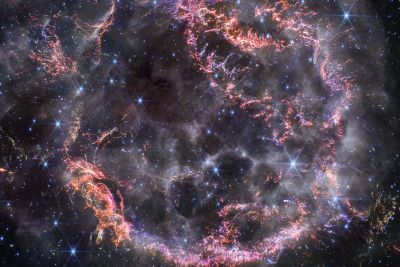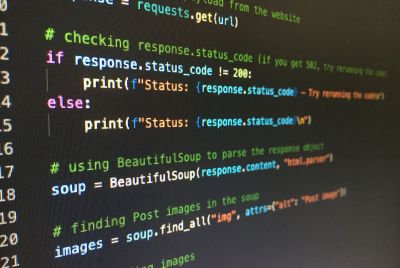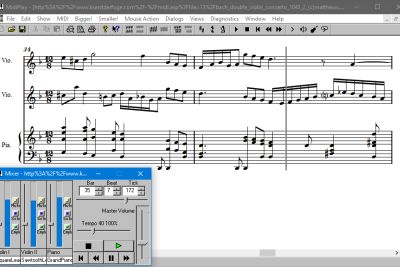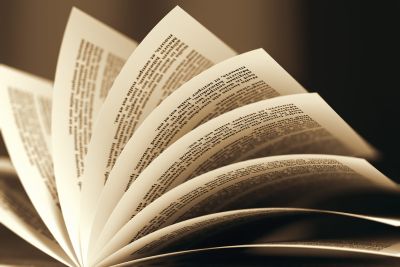Supernovae Sonification
Home / Public Outreach / Supernovae Sonification
Sonify the Cosmos: Create Your Supernova Melody
We have sonified the largest supernovae dataset to create what we call the celestial symphony of dying stars.
Now it is your turn.
Who can join
Anyone interested in translating ZTF's supernova light into sound, a process called sonification, can participate. We welcome students, musicians, scientists, and citizens of any experience level to try it out.
Begin to sonifyVideo Instructions
These video instructions guide you step by step in the process of sonifying our datasets. You can choose to start from scratch with the raw dataset (requires basic coding skills) or focus on applying your creativity with the pre-made MIDI files (requires basic music knowledge).
WatchResources
We've provided you with a full data-set and several smaller data sets, a downloadable Python code used to translate astronomical parameters into musical characteristics, and several MIDI files in various scales that you can choose from.
DownloadLearn more
A high school student passionate about music and science worked with Caltech astronomers to create a spectacular musical symphony from the largest supernovae survey. But why stop there? We have created the resources to allow you to make your own melodies from astronomical data. Let's build a unique library that we will share with the world.
Read moreAbout the project
Find out about the person who sonified dying stars, what inspired her to begin this outreach project and why it is important to make science more accessible.
When we think of explosions, one of the strongest associations we make is with a loud, deafening noise. But sound doesn't travel through the universe. When we observe dying stars - and they invariably die with a spectacular explosion - our telescopes only see the flashes of light generated from them. We call these flashes suppernovae and they are sometimes thousands of times brighter than the stars themselves.
The Zwicky Transient Facility has the most comprehensive survey of supernovae, called the Bright Transient Survey. Astronomers have now classified over 9000 supernovae using the color composition during the explosion. What if we could also hear all these thousands of stars die?
This is what Vanya Agrawal, a high school student from Palos Verdes High School in Los Angeles has attempted under the guidance of Christoffer Fremling who is also the lead astronomer of the Bright Transient Survey at Caltech. Watch this interview with Vanya to learn what inspired and challenged her along the way.
The properties of the supernovae, such as date of discovery, lightcurve duration, type, peak brightness were translated into musical parameters such as the type of instrument, volume, sound duration and more. Read more in this interview with Vanya and Christoffer for the Caltech news column and check out this publication describing the project in detail.
Listen
A 40-sec teaser from our sonification that can be easily shared on social media to inspire others to join
This is a visualization of supernovae discoveries made by ZTF between March and Dec 2018. The appearance of each supernovae in the sky is synced with the sonification of the same dataset.
A 28-min long sonification produced with the full ZTF dataset of supernovae
Begin your own sonification
If you could hear stars sing as they die, what music would that be?
We have created a package of resources and instructions to help you create your own music from astronomical data. All our materials are freely available and we invite those of you who use our data or MIDI files to share your creations with us. We aspire to build a library of your musical pieces that we will offer to science museums, formal and informal STEM educators, astroviz artists, planetariums and everyone practicing science engagement. We also plan to work with our partners at NASA, JPL, Vera Rubin Observatory, and more to explore how our library can increase accessibility to science in various science communication and outreach initiatives.
We encourage everyone who creates a sonification, to share it with us. We will host all sonifications on our website with a proper credit and short description about the artist.
Start from scratch
We recommend this option to those with some coding experience interested in defining their own musical parameters. We share the complete and customizable Python code that was used to create the original sonification. You can choose to modify it or write your own. Check out our step-by-step instructional videos 1-5, the source data, and the source code linked below.
Work with MIDI directly
We recommend this option to those with little interest and no experience in coding. We have prepared several MIDI files in various scales for you to build upon with your artistic creativity. Check out our step-by-step instructional videos 3-5 and download the MIDI files If you do not want to be limited by the MIDI files provided, you can always directly work with the source file (see "Start from scratch").
Video Instructions
1. The astronomical data explained
2. How to mofidy the Python code
3. Working with MIDI files
4. Creative Advice & other tips
5. Apps & tools
Resources

Source data
Here you can find the source data for your sonification. We have included a master file containing the entire dataset of 8000 supernovae and several smaller files. We recommend that you start with the smaller files to make your data processing and sonification length manageable.
Download
Source code
Here you can find the code required to turn the astronomical data into MIDI files for further sonification. It's written in Python and shared in the Google Colab space with lots of detailed explanations about the different sections and how to work with the code.
Download
MIDI files
Follow this link to go to a library of pre-made MIDI files you can use to create your unique sonification. Each file is in a different scale for more creative options. The entire data set is included in each file, so certain sections and supernova types can be selected.
Download
Contact
Are you interested in learning more about the sonification project? Do you have any specific questions or creative ideas you want to share? Contact us at ztf@caltech.edu
